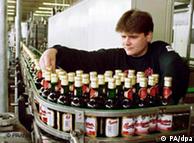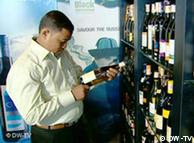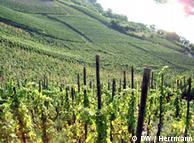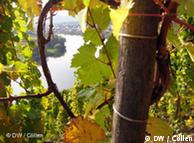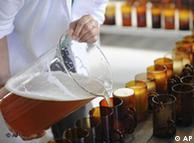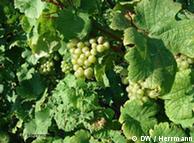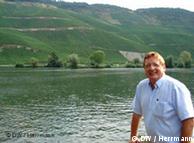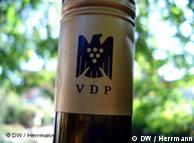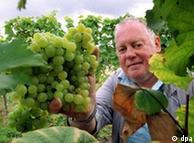| Proof: Drinking Outside the Temple Devotion to the art of the creative cocktail stretches coast to coast, writes Paul Clarke. |
New York is one of the world’s great drinking cities, and I raise a glass of Red Hook Rye that it will always be so. But America grew up as a drinking country, and it was once possible to come across as talented a barkeep in St. Louis, Chicago or Denver as could be found on lower Broadway. While it sometimes seems the country has become one massive expanse of big box stores, chain restaurants and strip malls, it’s reassuring to see that these drinker’s oases are not only surviving, but thriving. New York remains the shining star in America’s mixological firmament, but the clouds are clearing and the glittering expanse of the country’s boozy Milky Way is once more coming into view.
Drinking Outside the Temple
By Paul ClarkeEveryone has something they do well, along with a place where they learned how to do it. Me, I learned how to drink in New York.
I moved to Manhattan in 1988, a month after my 21st birthday, and in the time between the first welcome-to-New-York Rolling Rock at a forgotten East Village bar, and my farewell pints of Bass at Milano’s on East Houston Street 10 years later, I learned many things about alcohol. Not much about life, of course — I hadn’t figured out how to make a lot of money, or find true happiness, or make a relationship work — but I did learn about drink: how to order it, how to hold it, how to leave it alone, how it could take an everyday occurrence and make it at once absurd and sublime, how to feign sobriety while walking home at 3 a.m., and how if you were at the right bar with the right bartender and the right friends, last call was merely a suggestion and the party could continue until dawn.
One lesson absent from my alcohol education, however, was how to mix a decent drink. My New York drinking years revolved largely around beer, with the occasional scotch thrown in for good measure. It wasn’t until I’d been in Seattle for five years that I finally learned how to mix a proper Manhattan, and the effect was that of a whiskey-fueled satori: the skies cleared, the universe slipped into balance, and for the first time in my life I understood the concept of bibulous beauty. Overblown? Perhaps — but liquor has a tendency to do that.
After that, the pursuit of cocktail wisdom began to consume virtually all my free time. I’d spend hours prowling eBay in pursuit of bartending manuals from the cocktail’s heyday, and began allocating a part of each paycheck to building my liquor collection from a meager couple of bottles of vodka and crème de cassis into a mighty mixological machine replete with dozens of kinds of rum, bottles of obscure liqueurs and every type of bitters I could lay my hands on.
And the drinks! After mangling my first batches of Manhattans in a Pottery Barn cocktail shaker — I suspected they weren’t supposed to have a head on them — I began a more thorough exploration: from the basics of the Sazerac and the whiskey sour to the fragile gaiety of the Ramos Gin Fizz and the delicious obsolescence of the Police Gazette Cocktail, I mixed and sampled my way through the old books. Over time I began adding cocktails to my repertoire that I’d learned about in newspaper columns or online: the Red Hook, the Gansevoort Fizz, the Slope — drinks that had a character and composition that harkened back to the old days, but that had been created only weeks or months before by writers and bartenders now energizing New York’s cocktail scene.
It’s a rote part of America’s drinking history that the art of mixing a well-crafted cocktail — arguably at its prime about a century or so ago — never fully recovered from being kneecapped by Prohibition. My own spirituous experiments as a beginning drinker in the late ‘80s were with the drinks that defined the era: vodka tonics, Long Island Iced Teas, a token Fuzzy Navel and maybe a pitcher of Mudslides for the table. No wonder I usually stuck with beer.
But during that same time, unbeknownst to me, there were still a few artisan bartenders who rose above the tide (or the Mudslide, if you will). Then-Rainbow Room bartender Dale DeGroff was building a reputation for mining liquid gold from vintage bartending manuals and from his own pursuit of cocktail excellence. Dale was promptly joined by successive waves of gin-pouring artisans such as Audrey Saunders and Julie Reiner, and by adventurous bar owners such as Sasha Petraske, who together created an urban empire of classically oriented though modernly ambitious cocktail bars, built on a foundation of esoteric spirits, fresh ingredients, and perfect blocks of Kold Draft ice. This group, which has grown exponentially in the course of just a few years, may have saved the craft of the cocktail in America.
At least, that’s the way it can look when the farthest west you can see is Weehawken. As I enviously observed New York’s bibulous rebirth from afar, I drank closer to my West Coast home. While disappointed that I couldn’t just step into PDT’s phone-booth entrance in Crif Dogs whenever I wanted, I was quickly distracted by what I was finding out West, such as my local bartender, Murray Stenson, a 30-plus-year veteran of the bar now at Zig Zag Café who refuses to be swept up by the sometimes faddish aspects of the cocktail renaissance but who was practicing the principles expounded by David Embury, one of mixology’s high priests, when many of today’s top bartenders were still in diapers.
As I began trying other craft-oriented bars in Seattle and beyond, I saw how the New York cocktail culture that had become legendary among thinking drinkers was mirrored, in its own regionally styled ways, in cities across the country.
Over time I sampled — O.K, drank — cocktails such as the Averna-laced Black Manhattan at Bourbon & Branch in San Francisco, and the concoctions made with house-made amari and smoked ice from Portland, Ore., bartender Daniel Shoemaker, and talked inside baseball — or inside cocktail — with many, many more. As I did, and continue to do, the expanse of the country’s libational landscape began to define itself in broad, general ways.
San Francisco seems to be largely populated with vermouth-making, locavore-oriented Alice Waters-style bartenders who are not only growing in number as fast as those in New York, but are taking a shot at Gotham’s title as the country’s most exciting city for cocktails.
Bartenders in Portland are deploying improvisation and experimentation that is waking up the city’s once-sleepy cocktail culture, and in Los Angeles — where for years the quality cocktail scene was mostly as glossy and devoid of substance as, well, the rest of L.A. — a growing group of die-hards is reintroducing the city to the beauty of a well-made drink, eschewing simple visual dazzle and blatant product placement in favor of drinks made with a deeper culinary comprehension.
And as I talked to bartenders and drink geeks who lived in or had visited places I haven’t in recent years, I saw that this flood of quality drinking was not confined to the West Coast: Boston bartenders are challenging Seattle for the designation of most-vibrant-yet-underappreciated bar scene in the country; a small group of Texas bartenders are preparing to make Houston an unlikely fine-drinking destination; and craft bartenders have established a beachhead in and around Washington, D.C. And in New Orleans — which hosts a convention each year for bartenders and other cocktail geeks like me — bartenders such as Chris Hannah at Arnaud’s are proving that the city’s mixological range extends well beyond Sazeracs and Hurricanes.
